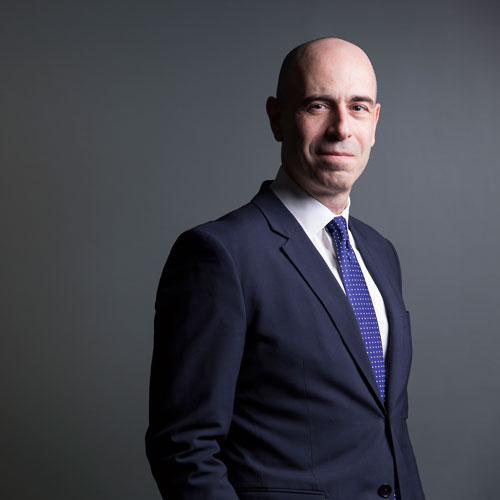
The former headquarters of Boston Scientific, the global medical device company, in Natick, Massachusetts, was described by the Boston Globe as “dark and dated, with most managers tucked away in private offices.” That’s the harsh perspective of a third-party observer, but don’t we all eventually grow comfortable in our surroundings, not noticing how they might be affecting our work?
Paul Donhauser managed to take that outsider’s view when he decided to shake things up. As the company’s director of global real estate, facilities, and environmental health and safety, Donhauser had been with Boston Scientific since 2004, and knew that change was exactly what the company needed. So with more than a little effort—and the backing of Boston Scientific’s new CEO—he convinced the company to ditch its old digs for something brighter, more modern, and conducive to productivity.
“My goal was to help build a new company,” Donhauser says. Indeed the developer, manufacturer, and marketer of such products as stents, defibrillators, and pacemakers had been lagging over the past decade. Nevertheless, the newly appointed president and CEO, Michael F. Mahoney, was credited for tripling company stock value in his first three years. Boston Scientific’s move to a gleaming, bright, and resolutely open-plan office campus in Marlborough, Massachusetts, is considered a key ingredient to this success.
“This move was a workplace strategy,” Donhauser says. “The idea was to build a facility that represents who we will be over the next 10 years.”
Undoubtedly, companies know that attractive workplaces attract talent. Modern and sustainable office interiors designed to improve employee health do that through good ergonomics, access to natural daylight, physical health amenities, managed acoustics, and a sense of immersion in nature with indoor plants and exterior views of vegetated places.
The Marlborough headquarters provides all of these amenities. It combines both retrofit and new construction, set on a 120-acre campus and designed by Margulies Perruzzi Architects of Boston. The LEED Gold-certified building allows for natural daylight, low-emitting interior finish materials, water and energy efficiency (including rooftop solar), and includes an on-site fitness center, daycare, dry cleaning, hair salon, and cafeteria.
The Natick offices were about 80 percent private offices and 20 percent open spaces, but the open-plan Marlborough facility essentially reversed those numbers. To avert noise issues in that open working space, “white noise”-generation devices have been installed in ceilings to achieve optimal acoustics.

All of these initiatives contribute to morale. As Wendy Carruthers, senior vice president of HR, told the Boston Business Journal, the fitness and daycare facilities are among features that make the company “informal and accessible . . . the overall culture is one that’s a lot more dynamic.”
Donhauser says the move to Marlborough generated some resistance from employees and could even be thought of as counterintuitive, given how the facility is another 12 miles away from the Boston city center. Wouldn’t the commute kill the green benefits and possibly hurt the recruitment of talented personnel? “We had to create an ecosystem on campus,” he says, citing the aforementioned features. The company also provides a luxury bus shuttle for employees from multiple city and suburban sites.
Construction of the 110,000-square-foot headquarters went smoothly in 2013 and 2014, “hitting every milestone,” Donhauser says. He credits construction manager Columbia Construction of North Reading, Massachusetts, with this success, citing how the company “assigned their A-team to the project.”
Prior to moving to the Marlborough campus, Donhauser created an enterprise-wide program that reduced the firm’s carbon footprint and controlled energy costs globally. His solution was the Global Facilities Utility Management Council (GFUM), a cross-site communications forum that reduced energy spending over five years by $10 million, cut greenhouse gas emissions by 24 percent, and increased renewable energy use by 200 percent. The initiative coincided with establishing nine LEED-certified buildings (2.4 million square feet) around the globe.
Perhaps one of the more stunning results of this global approach is its Coyol, Costa Rica, manufacturing site. Built with the stringent, antiseptic “clean rooms” required in medical device manufacturing, plus offices and a data center, it achieved LEED Silver certification—making it the first LEED building in Costa Rica. The area already enjoys clean hydroelectric energy, but a heat recovery system saves a further 4.26 million kWh in energy use per year, worth $425,000 annually. Remarkably, construction costs for the entire project came in $1 million under budget.
To be clear, Donhauser’s work with GFUM was an effort in silo busting. Still, the successes—net annual energy savings of $9.7 million for the 25,000-employee, seven-division, 144-building, 8.4 million-square-foot company—indicate that previous resistance has been overcome. A collaborative effort called the “global energy management system,” or GEMS, is now underway to further reduce energy consumption by 10 percent.
That’s a bright vision—far better than something dark and dated.


